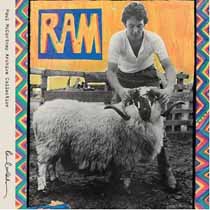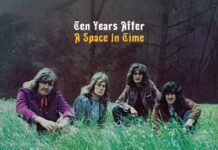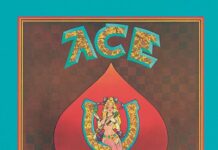When you look back at how John Lennon, Paul McCartney, George Harrison and Ringo Starr carried out their solo careers after the Beatles broke up, you get a real sense of where each one of them were mentally as artists and individuals. Surely, Harrison was bursting at the seams with songs he wasn’t able to get on Beatles records and hit No.1 with the triple LP All Things Must Pass. Lennon, of course, exploded with pent-up rawness and emotion on Plastic Ono Band. Starr went on A Sentimental Journey with an album of standards. Out of all of them, it was Paul McCartney whose first steps as a solo artist carried a defiant, almost hesitant intent. Without the Beatles as his musical messengers, McCartney pulled back the reins and turned organic. His first self-titled solo album was the summation of his DIY approach. And then there was the second album, Ram.
Firmly united with his wife Linda, McCartney decided to get “strong and male” and kick it up a notch with Ram. It would be the one and only album ever released by Paul and Linda McCartney as a musical pair. Looking back over 40 years, the album certainly holds up — well enough, in fact, to warrant a reissue in a variety of configurations and formats from Concord Music Group. In addition to the standard remastered 12-song CD, there are special and deluxe editions with bonus CDs, mono mixes and even a DVD. Accompanied by drummer Denny Seiwell and guitarists David Spinoza and Hugh McCracken, Paul and Linda McCartney’s homemade hodge-podge of whimsy has transcended a period of time when the chief members of the world’s greatest rock and roll band (Lennon and McCartney) decided to put on the gloves and stage one of the greatest rivalries of show business bitterness and deceit pop culture had (up that point) ever seen.
Pulling no punches, Ram starts off with “Too Many People,” McCartney’s message to Lennon about his activism and “preaching practices.” It’s one of the few songs from the album, with its haunting guitar refrain, that McCartney has played live in recent years. After a few awkward songwriting stretching exercises (i.e., “3 Legs,” “Ram On and “Dear Boy”), the singer finally settles in on the epic “Uncle Albert/Admiral Halsey,” his first No. 1 single since the messy Fab Four split. The song, strewn with allegorical passages and musical twists and turns, would greatly determine the course of the former Beatle’s direction. But not before the raunch of “Smile Away” reclaimed the cheeky one’s love of rocking out.
The record becomes more developed as deeper tracks like “Eat At Home,” “Long Haired Lady” and “The Back Seat Of My Car” ably define McCartney’s gift for arrangement and economy. And his lovely better half does an admirable job on backing vocals, without over stepping her bounds or abilities. As McCartney recounts in Ramming, the DVD’s short overview on the album, he wrote most of the songs on Ram in Scotland, asked his wife to join his “band” and set about recording the record in New York. Linda also received a co-writing credit on six of the songs. Of course, her role as a singer and eventually keyboardist in Wings would come to fruition by the end of the 70s.
A second CD of bonus tracks contains the much-maligned “Another Day” single and its gritty B-side, “Oh Woman, Oh Why.” Ranging from downright jaunty (“Little Woman Love”) to light and airy (“Hey Diddle”) to dirty n’ raw (“Rode All Night”) to after-hours cocktail lounge (“Sunshine Sometime”) — the McCartneys apparently had so many songs, they couldn’t all fit on Ram. Thanks to the wonders of technology and back-catalog imagination, we can now enjoy all the songs, get McCartney’s perspective and even glimpse a bit of on-the-road footage of the first incarnation of Wings (with guitarists Henry McCullough and Denny Laine) from the Denny Seiwell archives. Offered up in broader strokes, it ultimately comes down to the fact that Ram effectively transformed Paul McCartney from a Beatle into the full-blown solo artist he is today.
~ Shawn Perry




















